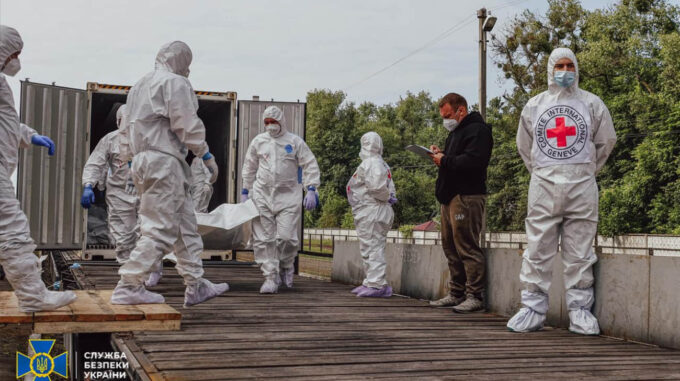Changes in the logistics of repatriating the bodies of Ukrainian defenders: from railways to road transport

On Saturday, June 15, two key stages in the process of returning the bodies of fallen Ukrainian soldiers from combat zones were completed simultaneously. While previously the main method of transportation was by railway, organizers and responsible services are now shifting to the use of motor vehicles. This was announced by the press service of the Security Service of Ukraine, which is coordinating this complex and particularly delicate operation. According to the agency, the decision to change the logistics approach was made based on agreements reached during negotiations in Istanbul. Although the details of these agreements are currently confidential, an official source reports that instructions have been given to use specifically road transport for the subsequent stages of repatriation. The previous period, spanning several months, was open for the rapid and efficient return of bodies via rail. This allowed for a significant acceleration of the process and an reduction of logistics-related risks in active combat zones. However, due to the agreements reached and new conditions, the operation involves international structures. In particular, representatives of the International Committee of the Red Cross joined the effort, not only monitoring procedural compliance but also noting a high level of organization. According to the Red Cross representatives, the repatriation was carried out “at the highest level,” with strict adherence to international norms and protocols. They also expressed gratitude for the “dignified level” of support and respect for the fallen servicemen, which underscores the seriousness and responsibility of the Ukrainian side in this process. It is worth recalling that on Sunday, June 17, within the framework of the agreed agreements in Istanbul, approximately 1,200 bodies of Ukrainian defenders were returned to their homeland. To date, more than two thousand bodies have been handed over to the Ukrainian side over the past two days—June 14 and June 17. The precise number of identified bodies highlights the scale of this complex operation and evokes both deep respect for the heroically fallen and high praise for the organizers' coordination and professionalism. The shift in logistical methods in the process of returning bodies is an important stage in the humanitarian support of the Ukrainian army. It demonstrates an effort to honor the memory of the deceased and ensure a dignified farewell. While specific details regarding future stages of this operation remain confidential, it is anticipated that switching to road transport will make the process even more organized and convenient for all involved parties.

